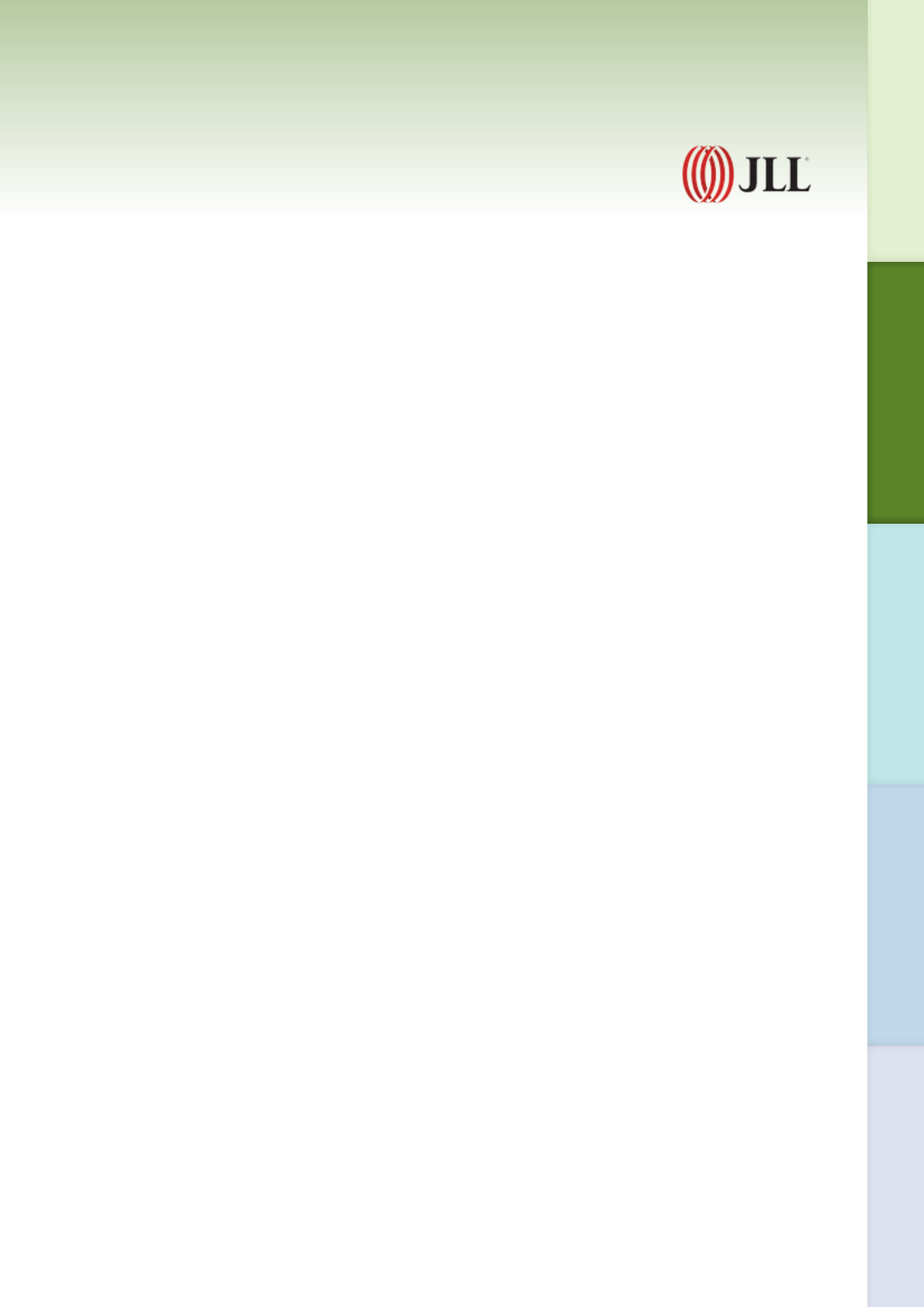
MARKET REVIEW
MALDIVES
HOTEL PROPERTY SECTOR
as of 1 March 2016
MARKET REVIEW
MALDIVES TOURISM MARKET
The Maldives has been experiencing steady economic
growth in the past decades, driven largely by tourism and
fishing. According to the National Bureau of Statistics, the
tourism industry accounted for approximately 25% of its
Gross Domestic Product (GDP) on average over the past
five years.
In 2015, international visitor arrivals experienced slower
growth, marginally increasing by 2.4% yoy to reach 1.23
million. The slower pace of growth is primarily due to the
decline in Russian and French tourism arrivals and the
notable appreciation of the US dollar. However, the decline
in visitor arrivals from Russia and France were supplanted
by the strong visitor arrivals growth witnessed from other
source markets such as Germany (+6.9%), UK (+4.6%), Italy
(+13.4%) India (+14.9%), and the Middle East (+12.8%).
Visitor arrivals from China remained stable and recorded a
marginal yoy decline of 1.1% in 2015.
HOTEL MARKET PERFORMANCE
According to STR Global, overall marketwide trading
performance for the Maldives has staged a strong
recovery since the global financial crisis up until 2014.
Although affected by the Eurozone sovereign debt crisis,
market trading performance subsequently increased and
showcased consistent yoy growth until 2014 driven by
the ease of accessibility of the Maldives to the European
and Asian traveler, and propelled by the robust growth in
Chinese visitor arrivals. Occupancy has likewise grown and
remained relatively robust for a resort destination during the
same period.
However, the trading environment in 2015 across the
market was more challenging, with occupancy declining 8.8
percentage points to 63.9% compared to the previous year.
Average daily rates were relatively flat, growing moderately
by 0.8% to US$725. Overall, RevPAR decreased by 8.0% to
US$463. The relative performance of ADR, despite a strong
US dollar, indicates that the market is still able to charge
premium rates even though occupancy has declined. We
are of the opinion that had Russian demand not been soft
during 2015, the Maldives would have had another year of
positive RevPAR growth.
The growth of the Chinese market to the Maldives, now
representing almost 30% of total visitor arrivals, has
also had an effect on occupancy over the past few years.
However the growth in visitor arrivals from the Mainland
Chinese market has tapered down in 2015. Although overall
Chinese demand has shown exponential growth since 2009,
Chinese visitors tend to have a shorter length of stay and
the market’s continued shift to shorter-staying visitors has
reduced the average length of stay from 6.7 nights in 2012
to 5.7 nights in 2015.
EXISTING AND FUTURE SUPPLY
According to the Ministry of Tourism, Arts and Culture, a
total of 115 resorts with 24,877 beds were registered in the
Maldives as at December 2015 as compared to 112 resorts
with 24,135 beds in December 2014. This represents growth
in the number of beds of approximately 3.1% year over year.
In 2016, a few hotel and resort openings in the Maldives have
been announced including the 130-villa Chedi Dhapparu,
the 60-villa LUX* North Malé Atoll, the 90-villa Hurawahli
Resort and Spa, the 77-villa St Regis Vommuli, and 120-villa
Amari Havodda. A total of 994 rooms are planned to open in
2016 and comprise rooms from new openings, re-opening
of resorts that closed for refurbishment and expansions in
room count by existing resorts. An additional 1,934 rooms
are planned to open in 2017 and beyond.
Although the level of new projects in the pipeline is large,
we are aware that there is a high degree of uncertainty
surrounding the timing of future developments. Certain
projects such as Mandarin Oriental Maavelavaru have been
delayed indefinitely and other projects may run out of
financing and remain idle for the foreseeable future. As a
result, even though the future supply discussed is of known
projects, it is unlikely that a number of these projects will
open on time or at all.
HOTEL MARKET OUTLOOK
The Maldives government is committed to growing its
tourismmarket. In 2016, the Maldives will be embarking on a
new “Visit Maldives Year” campaign to boost tourist arrivals.
The year-long campaign will comprise international events
carried out by the Maldivian government. The government
aims to bring in 1.5 million international visitor arrivals in
2016, which would be an approximate increase of 21.5%
yoy. The Mainland Chinese source market will continue to
be a key focus in 2016, with the target of 500,000 visitor
arrivals as compared to 359,514 in 2015.
Several challenges to the tourism industry exist within the
short term, in particular macroeconomic events such as the
appreciation of the US dollar, uncertainty and volatility in
the financial markets, declining oil prices and slowdown in
the Chinese economy. Several key source market currencies
have depreciated relative to the US dollar, including the
euro, Korean won, Japanese yen and Chinese yuan, which
could impact arrivals from these markets. Other risks
include the widening of competition from emerging resort
destinations, in particular the Mauritius, Seychelles and
Sri Lanka, which are attracting interest from Europe and
Asia. These destinations in particular are focusing on
emerging interest from China at market rates that are
competitive to Maldivian resorts.
Despite the slower pace of visitor arrivals growth in 2015,
the underlying base of demand is likely to remain stable in
the medium to long term. Ongoing tourism infrastructure
improvements, coupled with increased airlift from other
markets, will continue to improve the medium- to long-term
prospects of the Maldives.
33
Annual Report 2015


